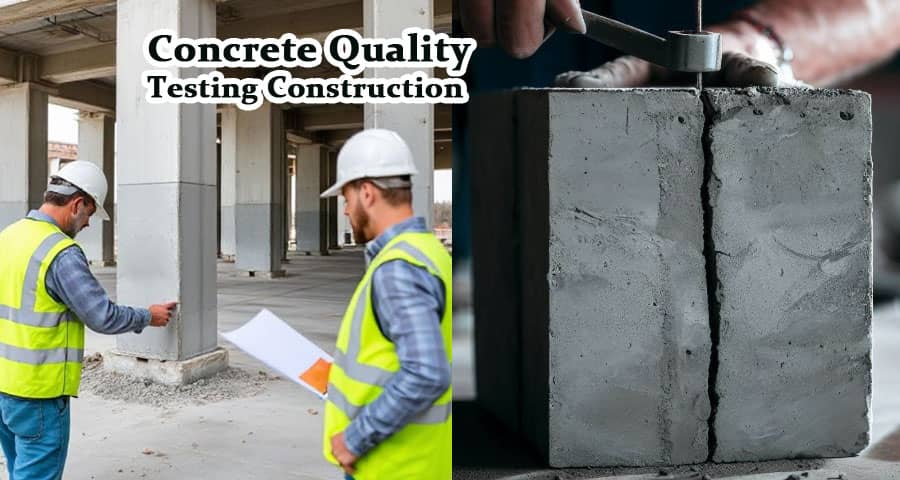Why is Concrete Quality Testing Important for Construction?

Concrete is the backbone of modern construction, widely used for buildings, bridges, roads, and infrastructure projects. Concrete quality testing ensures that structures remain safe, durable, and long-lasting. Evaluating the material's properties is a crucial step that prevents structural failures and ensures compliance with industry standards.
Importance of Concrete Quality Testing
- Ensuring Structural Integrity
Poor-quality concrete can lead to cracks, shrinkage, and weakened structural integrity. Concrete testing verifies the material's strength, durability, and resistance to environmental factors. - Compliance with Standards
Regulatory bodies such as the ASTM (American Society for Testing and Materials) and IS (Indian Standards) have established norms for construction materials. Quality testing ensures concrete meets these benchmarks. - Enhancing Safety
Structures made with substandard concrete are susceptible to collapse, posing significant safety risks. Regular testing mitigates these hazards. - Optimizing Material Usage
Proper testing reduces wastage and ensures the right mix design, leading to cost savings.
Types of Concrete Quality Tests
1. Slump Test
- Measures the workability and consistency of fresh concrete.
- Ensures the mix has the proper water-cement ratio.
- Low slump indicates low workability, while high slump indicates excess water content.
2. Compressive Strength Test
- Conducted using a compression testing machine.
- Cube or cylinder samples are cured and tested for their load-bearing capacity.
- Provides essential data to ensure the concrete meets the desired strength requirements.
3. Tensile Strength Test
- Evaluates the concrete's ability to resist tensile stress.
- Typically performed using the split cylinder test.
- Helps in designing structures that withstand tensile forces.
4. Flexural Strength Test
- Assesses the concrete's resistance to bending.
- Critical for projects like bridges and roads.
5. Water Permeability Test
- Determines the concrete's resistance to water penetration.
- Ensures durability in water-exposed environments.
6. Rapid Chloride Ion Penetration Test (RCPT)
- Evaluates the concrete's ability to resist chloride ion penetration.
- Crucial for structures in coastal and industrial areas.
Factors Affecting Concrete Quality
- Material Selection
The quality of cement, aggregates, water, and admixtures significantly impacts concrete strength. - Mix Design
Proper proportioning of materials ensures the desired strength and durability. - Curing Process
Adequate curing time and conditions ensure the hydration process completes, enhancing strength. - Transportation and Placement
Improper handling can lead to segregation and loss of strength. - Environmental Conditions
Factors like temperature, humidity, and exposure to chemicals affect concrete quality.
Best Practices for Concrete Quality Control
- Perform Regular Testing
Conduct both on-site and laboratory tests to monitor quality consistently. - Use Certified Materials
Ensure all raw materials comply with relevant standards. - Implement Quality Management Systems
Maintain thorough documentation and quality assurance protocols. - Monitor Mixing and Placement
Use experienced professionals to oversee the mixing and placing process. - Continuous Training
Train staff to follow standard operating procedures and identify defects early.
Conclusion
Concrete quality testing is an essential aspect of construction management, ensuring structures remain safe, durable, and compliant with regulations. By implementing rigorous testing procedures and maintaining quality control at every stage, we can ensure the longevity and reliability of modern infrastructure.
Please watch the following short video for concrete quality testing important for construction
